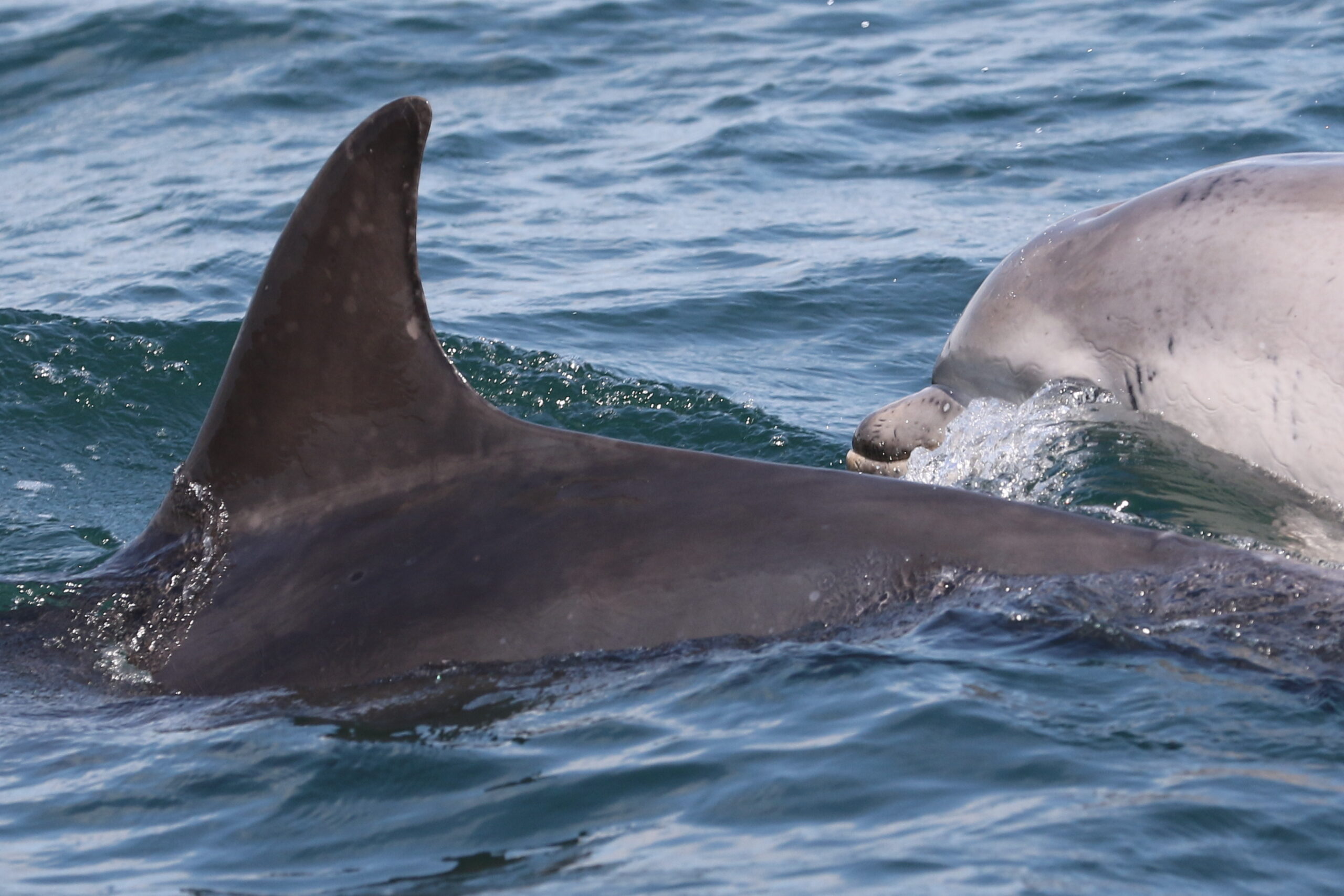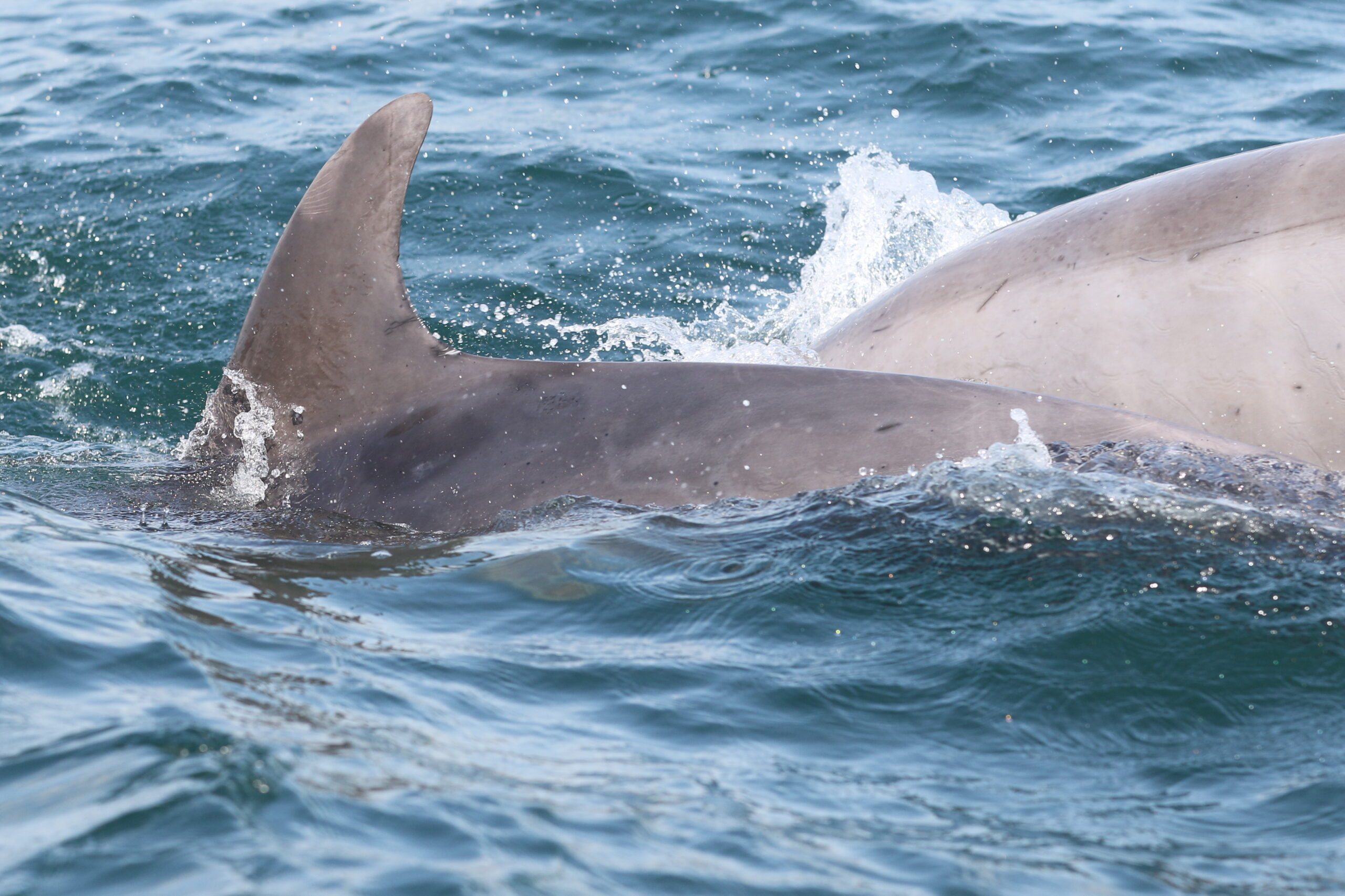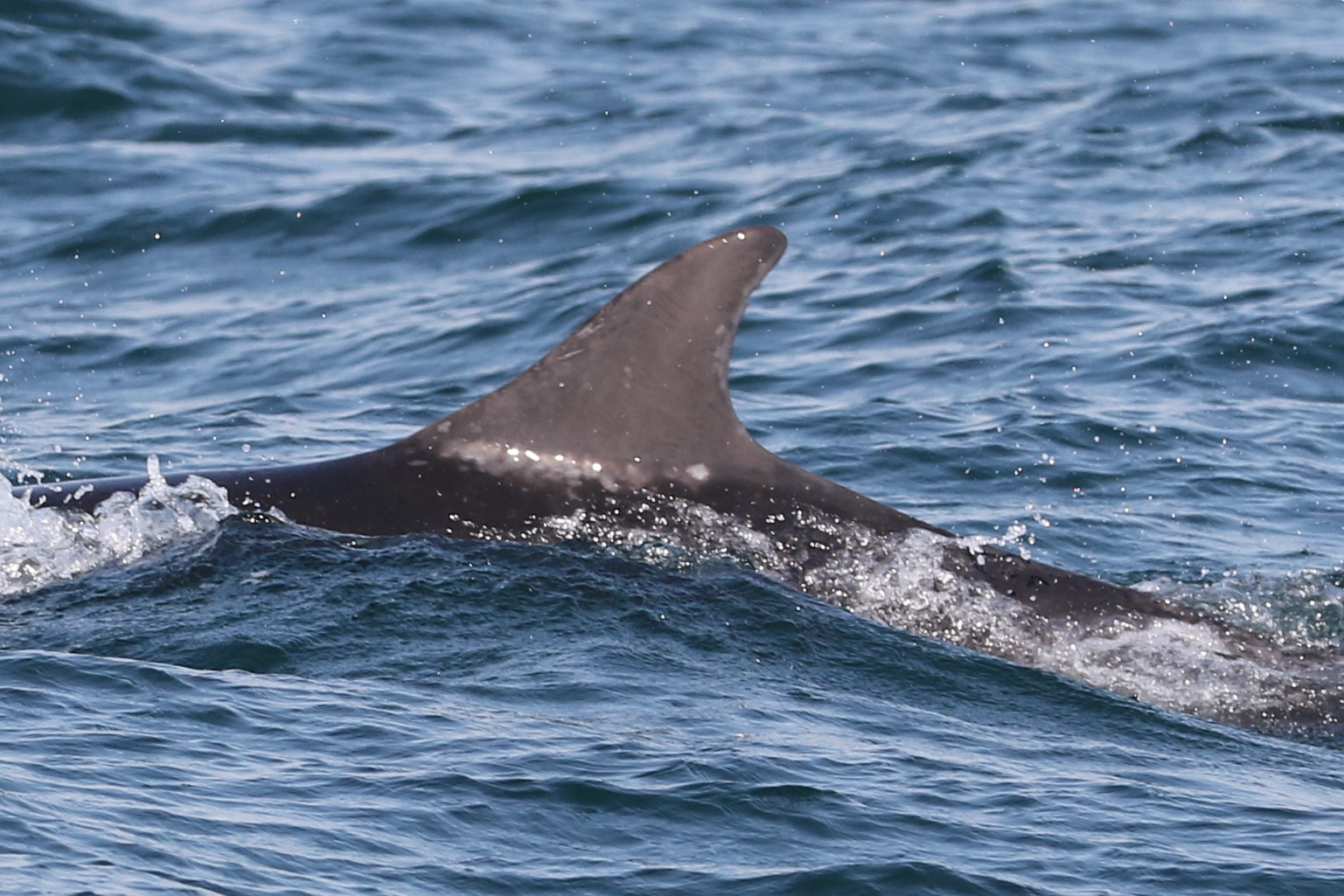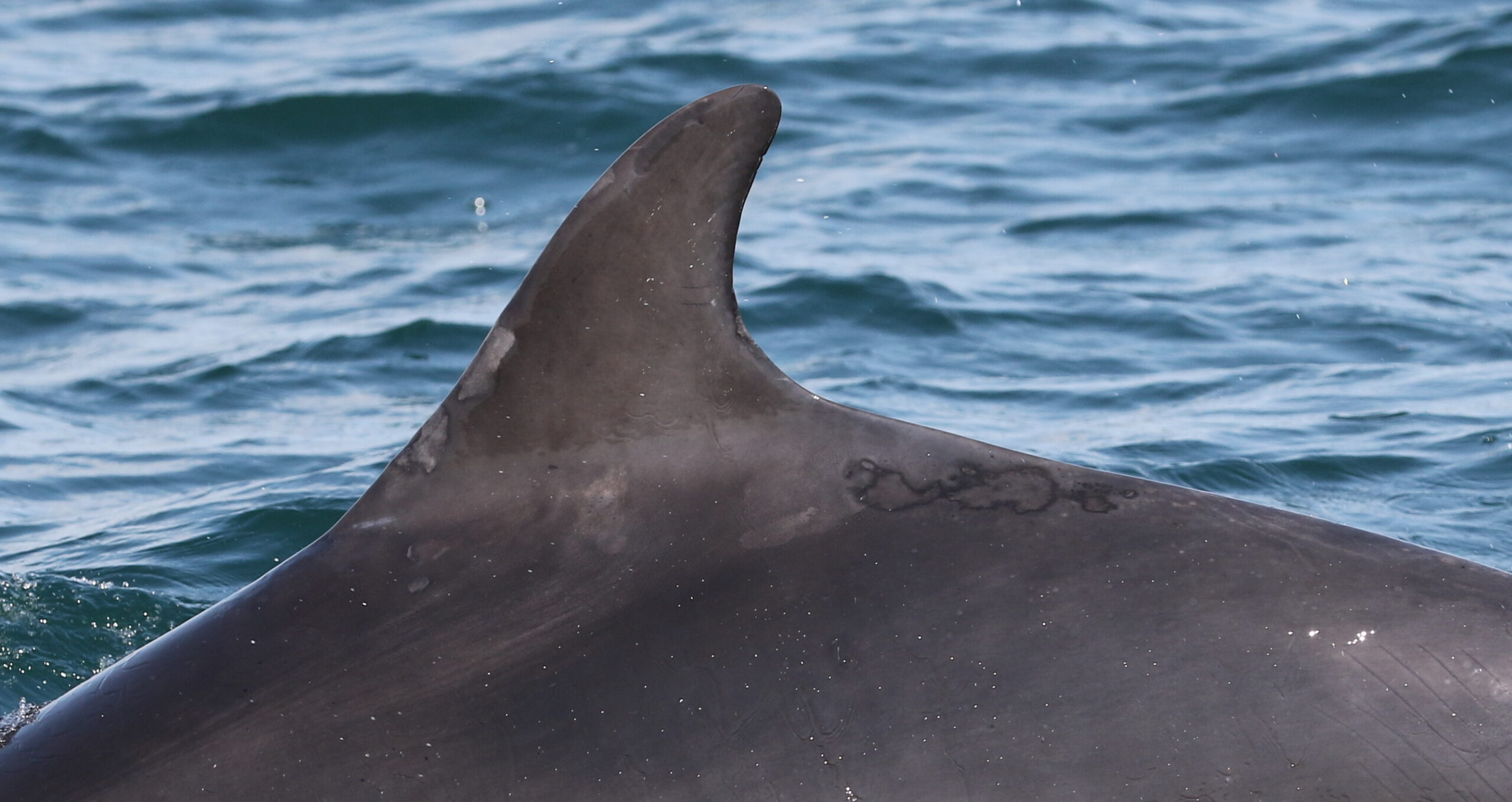When Citizen Fins was launched in September 2020 we had no idea of the amount of data or regularity of submissions that we would get. It’s now been over 2.5 years of receiving photographs from members of the public, primarily from NE England given the project aims. This has allowed us to get a glimpse on which animals from this east coast population occur regularly outside our surveyed areas in Scotland.
When we receive photographs of animals we look at their unique marks (nicks, notches, scars) and try to match them to the catalogue. However, sometimes we cannot find a match, and the animal gets a temporary number which identifies them in the meantime, in the hope a potentially better quality photograph will come through and we may be able to match it. These unknown animals may be new young animals we have never met before where we survey or animals that we have not seen in a while so that their natural marks have changed too much for us to recognize.
There has been one particular animal, with nice nicks and scars, which we thought we should be able to match. However, since first spotted off Long Nab Burniston, near Scarborough, in September 2021, we just could not find the match. Below is a photo of this individual, taken this month off Tynemouth.
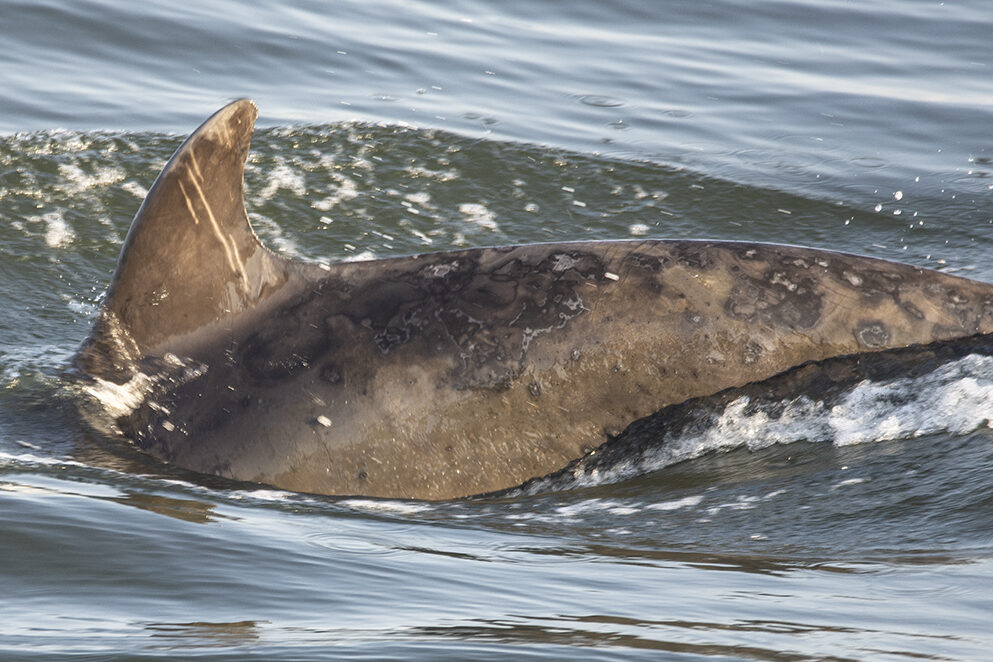
This animal was then seen in September and October 2021 in Newbiggin by the sea and around the Tynemouth. For most of 2022 (May, August and September) and 2023 (January, February, May) it was seen off Scarborough, thanks to photographs submitted by Stuart Baines, a regular to Citizen Fins. Then it was spotted by David Siggens off the Tyne pier on June 13th (photograph above), and off Bempton Cliffs on June 16th and 17th.
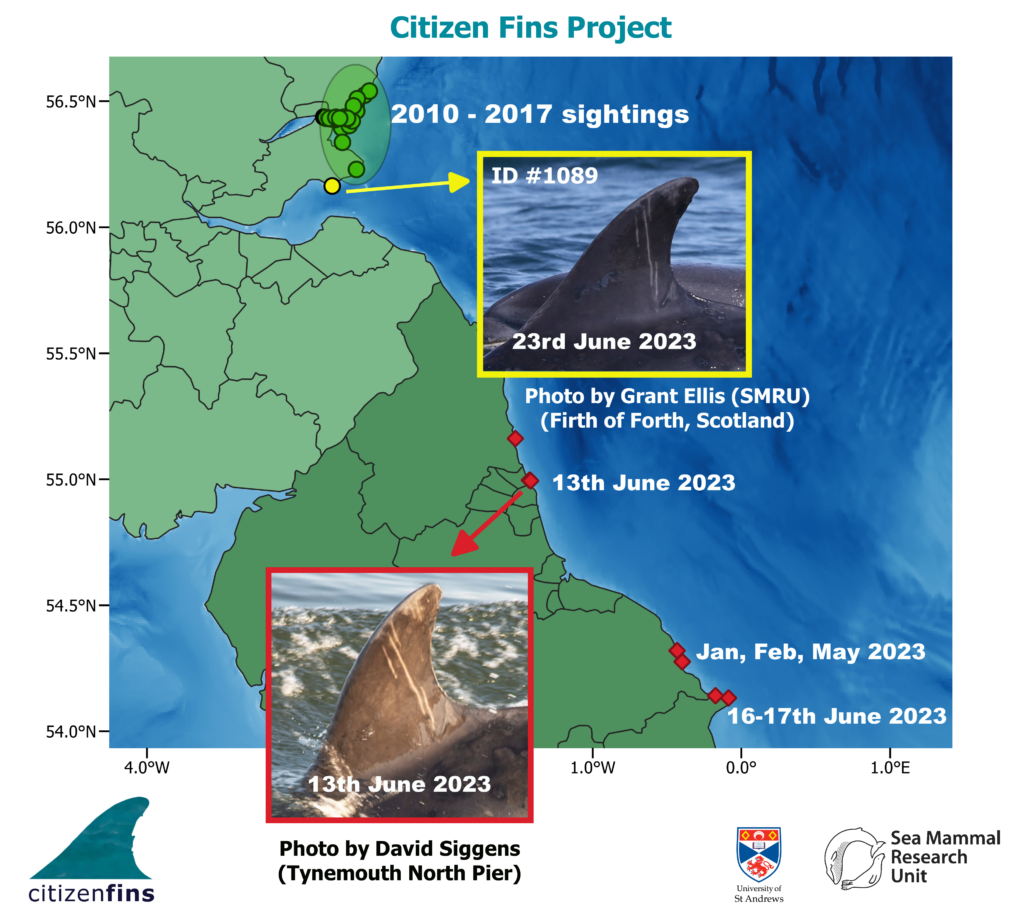
At SMRU we run our annual surveys off the Tayside and Firth of Forth between May and September each year. On Friday 23rd June, Grant was out on a trip, almost ready to turn around as the weather was picking up when a group of dolphins showed up near Elie! He immediatly recognized some fins, but fins that have been frequently submitted from NE England via Citizen Fins! And of course, one of the fins was this temporary ID…. We went through the catalogue looking for a similar fin shape we had not seen in a while and we stopped at #1089. This is an animal we have known since 2006 when we first saw it, and we used to see it regularly around the Tayside until 2017. We compared fin shape and scars between photos: we could match scars along the leading edge of the dorsal fin, a small white mark near the trailing edge, some horizontal tooth rakes across the dorsal fin and scars at the back of the body. Hurray, the match was confirmed!
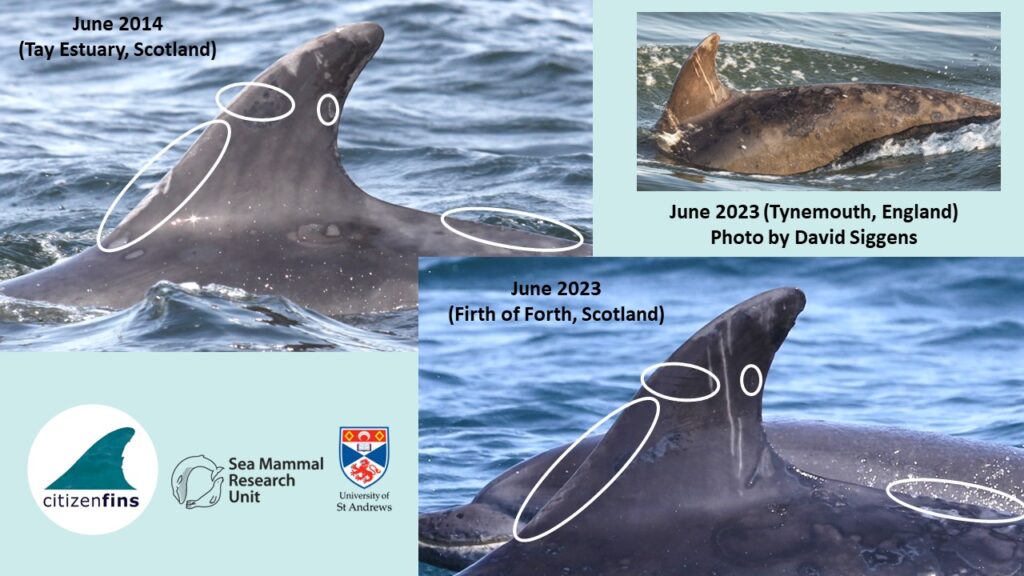
That day in the Firth of Forth, Grant also encountered some other animals that we had not seen for a little while, including #964 (Flipper, a male), #1002 (Holly), #1062 (White-Tip), #1029, and #1054, all of them females we’ve known since 2006 when they were first spotted. The group also had #1043 with her calf, as well as #1048, #1050, #1124, and #1217 (Pea).
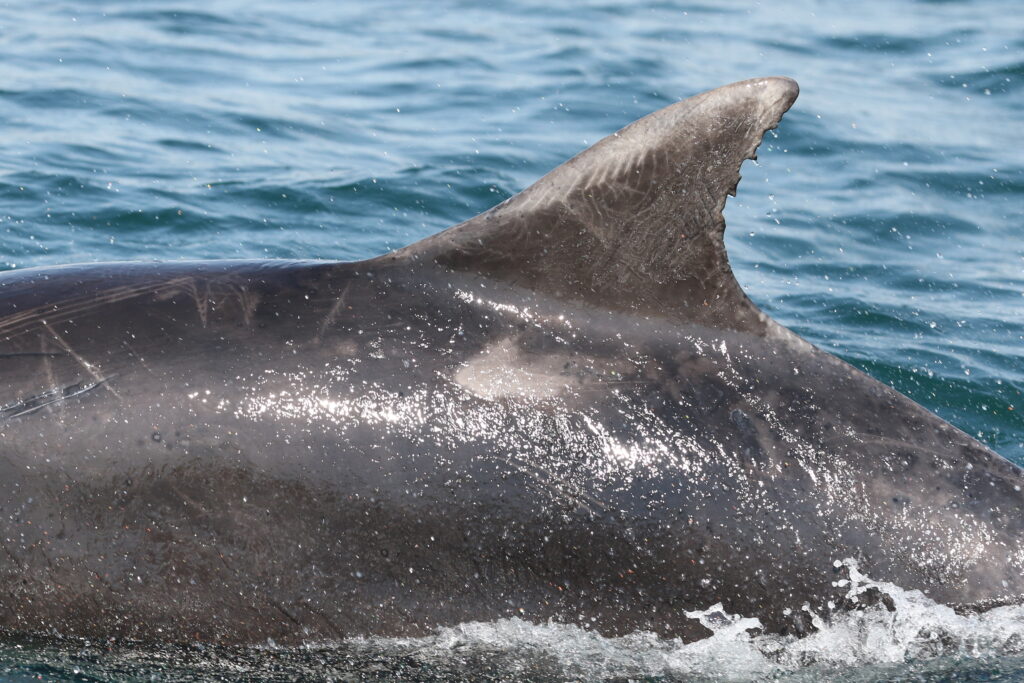
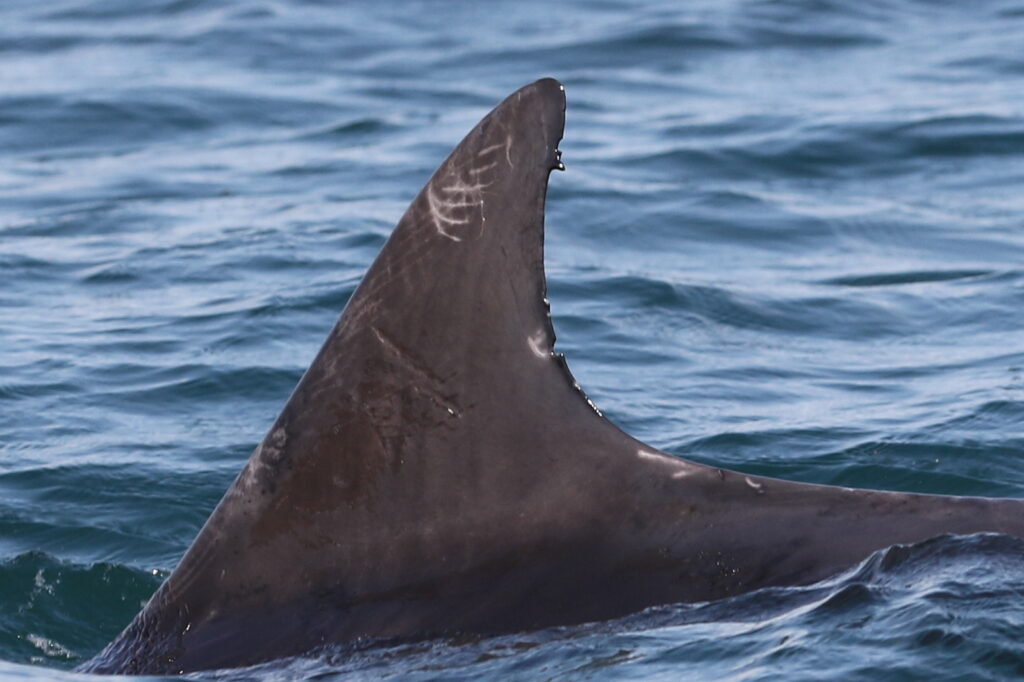
Photos like those sent by David Siggens and other wonderful members of the public through Citizen Fins help us fill in the gaps of the story, keeping track of animals as they acquire new marks, understanding how the population has been expanding down south and who in the population uses different areas along the Scottish and English coasts.
Keep them coming!



